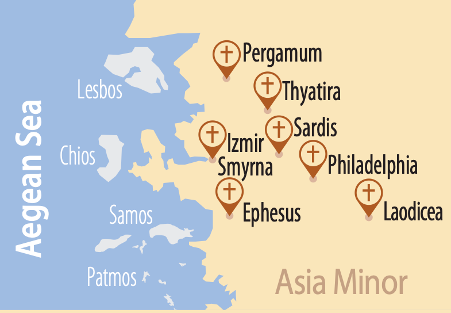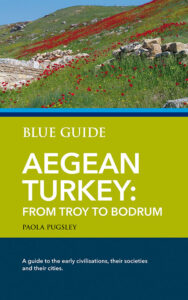The Book of Revelation, the last book in the New Testament, is traditionally held to have been written by St John (variously the apostle, the divine, the evangelist) while exiled to the island of Patmos from Ephesus on the mainland. It is prefaced by letters to seven churches* on the mainland. The classical remains, Christian assocations and pleasures of being in Turkey make the sites of these churches a great focus for a visit.
And indeed various tours are offered. For example with the Reverend James Buxton, chaplain of the Anglican church in Smyrna, with Tutku Tours (details here»).
* Ephesus, Smyrna, Pergamum, Thyatira, Sardis, Philadelphia, and Laodicea
James tells us:
“During this tour we will travel through beautiful Aegean landscapes and visit spectacular ancient cities. Our focus will be the ‘Seven Churches’ to which St John wrote letters at the beginning of the Book of Revelation. These are not seven church buildings, but seven cities in which there were early Christian communities. Five of these cities (Ephesus, Pergamon, Sardis, Laodicea and Smyrna (Izmir) have magnificent ruins in evocative locations. We will also visit other sites, such as Hierapolis, a glorious ancient city which stands at the top of the snow-white travertine terraces of Pammukale (which we will walk upon). Ephesus of course is famous and remains one of the most sensational ancient cities in the entire Mediterranean region. The final day of the trip (Sunday 29 May) we will attend the morning service at St John’s Church (my church), and visit other sites around the city, such as the Agora, the Citadel (Kadifekale) and the charming Anglican chapel at Bornova, where we will be entertained to an al fresco supper in the grounds of one of the great Levantine mansions. We will be accompanied by an excellent Turkish guide, and by me! May is a lovely month to travel in the Aegean region. The weather is warm and sunny, and the hillsides and ancient sites are ablaze with spring flowers.”









